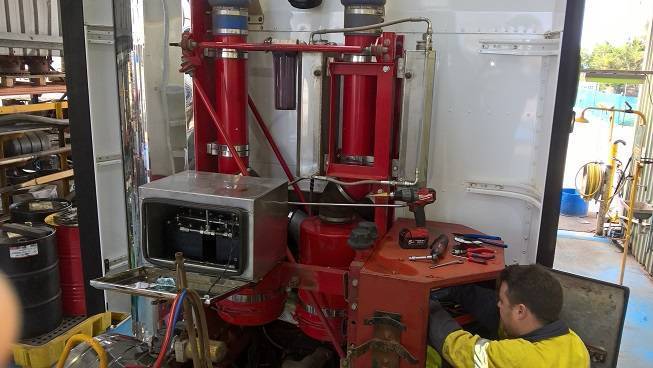Brilliant Invention Gen 20 Hydrogen Generator
Brilliant Invention Gen 20 Hydrogen Generator ---update Feb 7... Full Story
Perth, West Australia

Engine performance and Hydrogen gas. Presence of carbon element in the conventional fuel like petrol and diesel leads to emission pollutions which are associated with the combustion process in traditional internal combustion engine loaded on automobiles. Engine performance and HYDROGEN GAS .
Increasing stringency in pollution norms is forcing the researchers to work on methods to reduce these emissions especially in the field of alternative fuels. Oxy hydrogen gas, which is enriched mixture of hydrogen and oxygen bonded together molecularly and magnetically and producer gas are emerging as best alternative fuels in the recent past.
In this study methods to produce oxy hydrogen gas are discussed in detail with their comparison. Also discussions are made on the process of generating producer gas from biomass through pyrolysis process from coconut leaves which are available on the west coast of India, especially the Konkan region.
Finally the effect of these two alternative fuels on the performance of the diesel engine is tested when sent inside combustion chamber of twin cylinder diesel engine in blend with the diesel. Both alternative fuels improves the performance of diesel engine in terms of reduced values of brake specific fuel consumption and improved values of brake thermal efficiency.
Amongst both fuels oxy hydrogen is observed to be the best option to improve efficiency of diesel engine
More details of the report are visible by clicking on the following link ARTICLE/Study Engine performance and HYDROGEN GAS
Experimental tests to investigate the comparison between oxy hydrogen gas and producer gas are carried out on twin cylinder diesel engine. Oxy hydrogen gas has been generated by electrolysis process and producer gas by pyrolysis.
Both the alternative fuels mixed with fresh air before entering the combustion chamber. BSFC, Brake thermal efficiency, speed and load are the performance parameters kept under observation. The following conclusions are drawn:
1. It is very easy to integrate both the alternative fuels with existing engine. No major hardware modification is required.
2. Combustion efficiency increases with both alternative fuels due to presence of hydrogen in the blend. Since hydrogen is present in larger quantity oxy hydrogen gas compared to producer gas, the oxy hydrogen and diesel blend has shown best combustion efficiency as a result of which larger values of BSFC and brake thermal efficiency are obtained for the same engine.
3. Presence of extra oxy in both alternative fuels helps to improve the combustion efficiency further more. Water vapor is one of byproduct of combustion process with oxy hydrogen and diesel blend.
This decreases the combustion chamber temperature and thus decreases the chances of engine detonation. Very less amount of oxygen is available with producer gas and diesel blend hence it is not the case with this combination.
4. Cost of the producer gas generation is more compared to oxy hydrogen gas generation. Three phase AC power source is required for the generation of producer gas using pyrolysis process. Oxy hydrogen gas module requires only 12 V DC supply from the battery.
5. As far as implementation of both the alternative fuels with engine on automobiles is concern, oxy hydrogen gas is best suitable compared to producer gas. The size of the oxy hydrogen gas generation module is less and easy to install under hood of automobile engine.
The size of the producer gas generation module is very large and nearly impossible to fit on automobile engines, hence best suitable for the stationary engines application like pump, generators etc. Coal is coming as one of the byproduct of the pyrolysis process, can be used for domestic purpose, and hence an added advantage.
6. Presence of oxy hydrogen gas during the process of combustion decreases the hydrocarbon emissions from diesel engine [14]. Reduction in HC is observed because of short quenching distance and wide flammability range of hydrogen present in large quantity in oxy hydrogen and diesel blend.
Also an increase in turbulence intensity mixing process of burnt and unburnt gases increases the oxidation rate of HC thereby decreasing the HC emission from engine. More percentage of unburnt gases in producer gas diesel blend helps in the reduction of NOx from the diesel engine same as the exhaust gas recirculation (EGR) methods.
Views: 2
Saturday, September 18, 2021Brilliant Invention Gen 20 Hydrogen Generator ---update Feb 7... Full Story
Drop in oil price and Hydrogen. April 22 2020... Full Story
Effect of Water Vapor Injection on the Performance and... Full Story
Wide-Band-Instructions - HydrogenFuelSystems Click here Full Story
Narrow band Oxygen sensor instructions Click here for... Full Story
Payment Methods Partner:

© 2023 - Hydrogenfuelsystems pty ltd